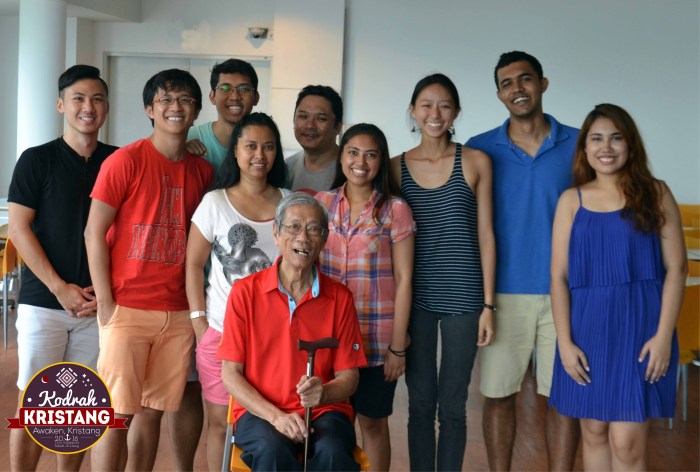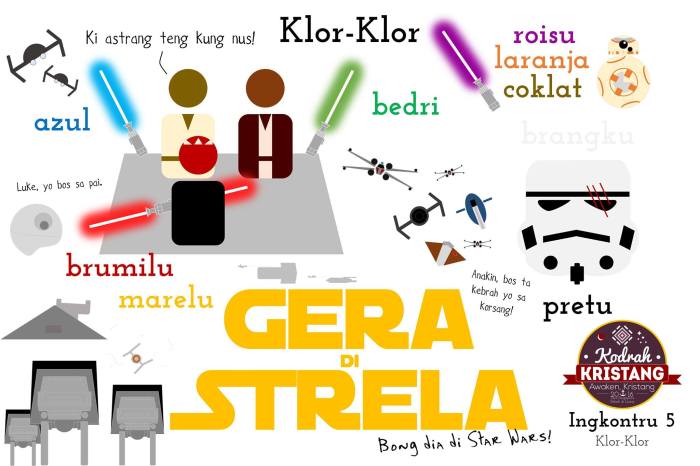By: Melissa De Silva
Of course, Kristang, being a creole of Portuguese and Malay, isn’t every Singaporean Eurasian’s mother tongue. Eurasians of other threads of heritage may count many other languages—German, Khmer, Thai, French, for example—among their wealth of mother tongue inheritance.
But since my four grandparents all were of Portuguese-Eurasian heritage (my maternal grandmother’s maiden name was Sequeira, my maternal grandfather was a Pinto, my paternal grandfather a De Silva, and my paternal grandmother’s family name was Pereira), for me Kristang is truly my mother tongue.








Since March this year, I’ve been attending Kristang lessons on Saturday mornings at the School of Alice and Peter Tan at NUS. The 2-hour lessons are conducted by final-year linguistics major Kevin Martens Wong. Kevin is 24 and he basically learned Kristang on his own by reading up (and memorising!) the scant available material on the language, such as dictionaries and books and poetry collections written by an amazing Malaysian Eurasian Kristang activist by the name of Joan Marbeck. http://joanmarbeck.com
Kevin is also the editor of an awesome online magazine on languages called Unravel. You can read a fantastic article he wrote on Kristang here: http://unravellingmag.com/articles/kristang-a-shallow-sea/
“The word Kristang is believed to be derived from the Portuguese word cristão, meaning, as it were, ‘Christian’. It stands not just for the language, papia kristang (‘Christian speech’) but also for a people for whom it is clearly evident in the singular use of this term that the Christian identity is a significant part of their tradition.”
— Kevin Martens Wong, ‘Kristang: A shallow sea’, Unravel, Issue 3
With Kevin teaching us the formal stuff like grammar and vocabulary and Mr Bernard Mesenas, a fluent elderly Kristang speaker, teaching us about Eurasian culture like proverbs and recipes for corned beef cutlets and Eurasian stew, our little class of under 20 people has come surprisingly far in a very short time.
After just a few lessons we are able to speak in full sentences in Kristang! We can now say stuff like:
I want to go home to sleep = Yo kereh bai casa bai drumi
I ate at Ya Kun with my friends = Yo jah kumi na Ya Kun kung yo sa kamradu
Amazing right??


How we achieved this feat was through the many fun and engaging slides and games Kevin designed. For Star Wars Day on 4th May, he did a hilarious slide to teach us colours (= Klor-Klor):


See that tiny line on the left? Luke, yo bos sa pai = Luke, I am your father (haha!)
Starting in July is another round of classes.


For those who can’t make it, Kevin and his friends have also recently come up with a fantastic podcast to teach Kristang to absolute beginners.
Being able to speak in (simple!) Kristang with my course mates makes me feel more Eurasian. And I finally feel like I have more of my own culture, which to be honest, I didn’t feel like I had very much to begin with.
As Eurasians, we are a people who do not have many visible, tangible traits to show our culture. We cannot boast of having unique beaded slippers, say, like the Peranakans, or a legacy of dynastic culture like the Chinese, or a wealth of literature, art and song like those from the Indian subcontinent. But what we do have, besides our awesome Eurasian cuisine—debal, feng, ambilla, sugee cake!!—is this language, which is truly ours.
Unlike, the Christian religion, which many of us Eurasians share with others in Singapore and around the world, the Kristang language is the one thing that is truly ours. Even with our Eurasian cuisine, there is overlap for example, with Indian and Chinese versions of sugee cake, Peranakan variations of buah keluak curry and chap chye, vindaloo from India.
But Kristang… Kristang is ours.
So… come join us, either for the beginners’ class (Kristang 1) or the elementary (Kristang 2, where my current course mates and myself will be come July). It’s fun, promise!
Beng nos papiah Kristang! = Come, let’s speak Kristang!
—
Melissa De Silva writes about Eurasian culture and identity and has had work published in literary journals in the US, Hong Kong and Singapore. She is currently working on a novel about Kristang and the Eurasian community.
—
Republished with permission from the website Eurasians in Singapore.

